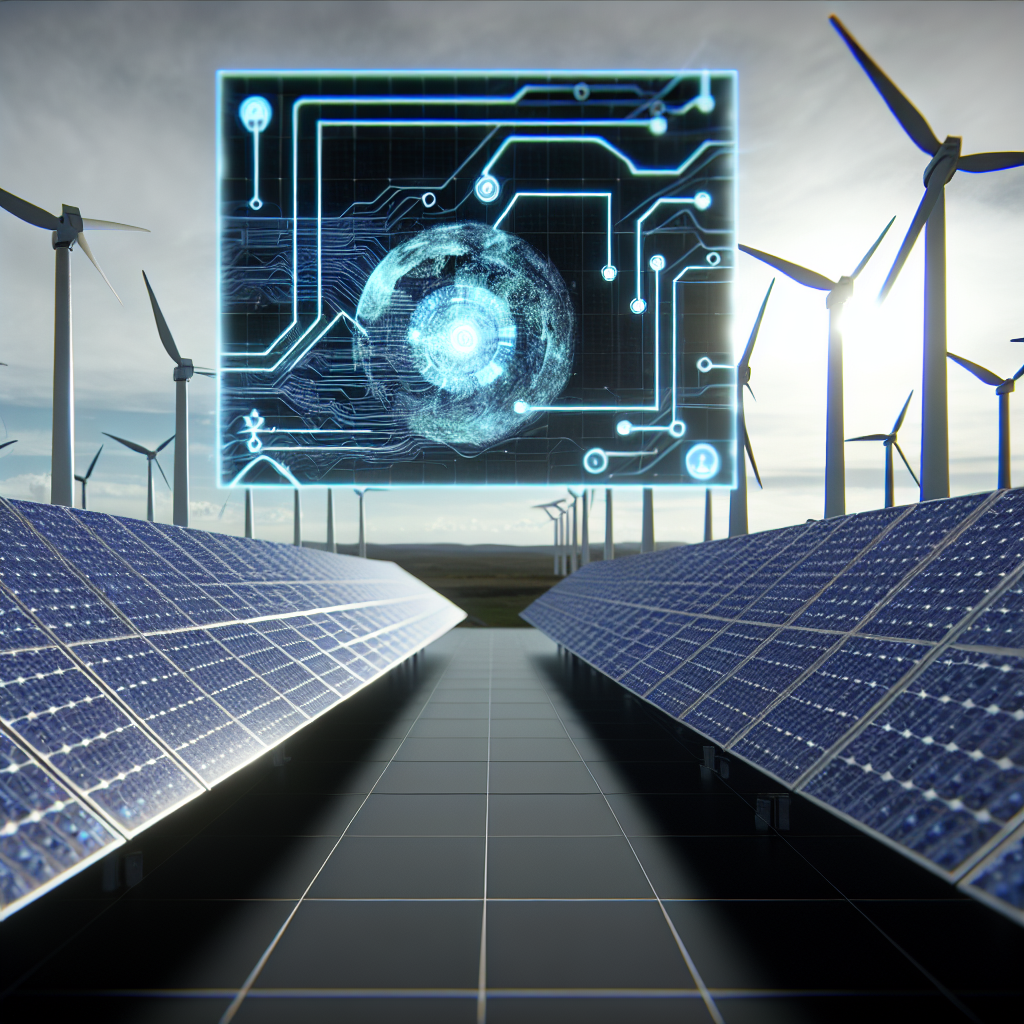-
- AI for Predictive Maintenance in Renewable Energy Systems
- Understanding Predictive Maintenance
- Configuration Steps for Implementing AI in Predictive Maintenance
- Step 1: Data Collection
- Step 2: Data Preprocessing
- Step 3: Feature Engineering
- Step 4: Model Selection
- Step 5: Model Training and Evaluation
- Step 6: Deployment and Monitoring
- Practical Examples of AI in Predictive Maintenance
- Example 1: Siemens Gamesa
- Example 2: GE Renewable Energy
- Best Practices for AI-Driven Predictive Maintenance
- Case Studies and Statistics
- Conclusion
AI for Predictive Maintenance in Renewable Energy Systems

As the world shifts towards sustainable energy solutions, the integration of Artificial Intelligence (AI) in predictive maintenance for renewable energy systems has become increasingly vital. predictive maintenance leverages AI to analyze data from various sources, enabling operators to anticipate equipment failures before they occur. This proactive approach not only enhances the reliability of renewable energy systems but also significantly reduces operational costs and downtime. In this guide, we will explore the configuration steps, practical examples, best practices, and relevant case studies to effectively implement AI for predictive maintenance in renewable energy systems.
Understanding Predictive Maintenance
predictive maintenance involves using data analytics and machine learning algorithms to predict when equipment failures might occur. This allows for timely interventions, minimizing unplanned outages and extending the lifespan of renewable energy assets such as wind turbines, solar panels, and energy storage systems.
Configuration Steps for Implementing AI in Predictive Maintenance
To successfully implement AI for predictive maintenance in renewable energy systems, follow these actionable steps:
Step 1: Data Collection
- Identify key data sources, including sensors, SCADA systems, and historical maintenance records.
- Ensure data is collected in real-time for accurate analysis.
Step 2: Data Preprocessing
- Clean the data to remove any inconsistencies or outliers.
- Normalize the data to ensure uniformity across different datasets.
Step 3: Feature Engineering
- Identify relevant features that influence equipment performance, such as temperature, vibration, and operational hours.
- Create new features that may enhance predictive capabilities, such as moving averages or rate of change.
Step 4: Model Selection
- Choose appropriate machine learning algorithms, such as Random Forest, Support Vector Machines, or Neural Networks.
- Split the dataset into training and testing sets to validate model performance.
Step 5: Model Training and Evaluation
- Train the selected model using the training dataset.
- Evaluate the model’s accuracy using metrics such as precision, recall, and F1 score.
Step 6: Deployment and Monitoring
- Deploy the model into the operational environment.
- Continuously monitor model performance and retrain as necessary with new data.
Practical Examples of AI in Predictive Maintenance
Several companies have successfully implemented AI for predictive maintenance in renewable energy systems:
Example 1: Siemens Gamesa
Siemens Gamesa has developed an AI-driven platform that analyzes data from wind turbines to predict failures. By utilizing machine learning algorithms, they have reduced maintenance costs by up to 30% and improved turbine availability.
Example 2: GE Renewable Energy
GE renewable energy employs AI to monitor the health of wind turbines. Their Predix platform collects data from sensors and uses predictive analytics to schedule maintenance, resulting in a 10% increase in operational efficiency.
Best Practices for AI-Driven Predictive Maintenance
To maximize the effectiveness of AI in predictive maintenance, consider the following best practices:
- Invest in high-quality sensors and data acquisition systems.
- Ensure cross-functional collaboration between data scientists and maintenance teams.
- Regularly update and retrain models with new data to maintain accuracy.
- Implement a robust data governance framework to ensure data integrity and security.
Case Studies and Statistics
Research indicates that predictive maintenance can lead to significant cost savings and efficiency improvements:
- A study by McKinsey found that predictive maintenance can reduce maintenance costs by 20-25% and increase equipment uptime by 10-20%.
- Case studies from various renewable energy companies show that implementing AI-driven predictive maintenance has led to a reduction in unplanned outages by up to 50%.
Conclusion
AI for predictive maintenance in renewable energy systems is not just a trend; it is a necessity for optimizing performance and ensuring sustainability. By following the outlined configuration steps, leveraging practical examples, adhering to best practices, and considering relevant case studies, organizations can effectively implement AI-driven predictive maintenance strategies. This proactive approach will not only enhance the reliability of renewable energy systems but also contribute to a more sustainable future.